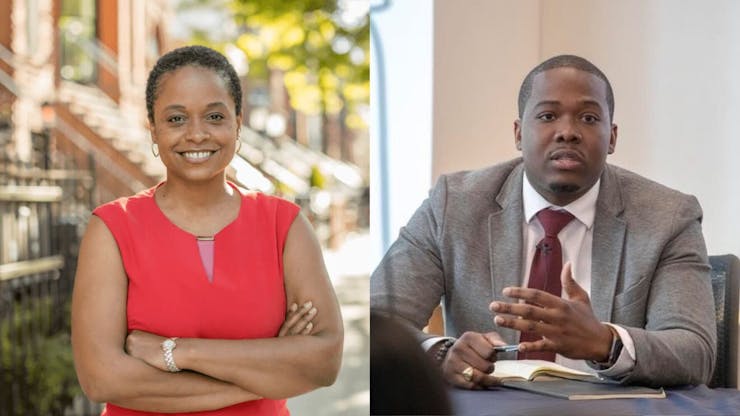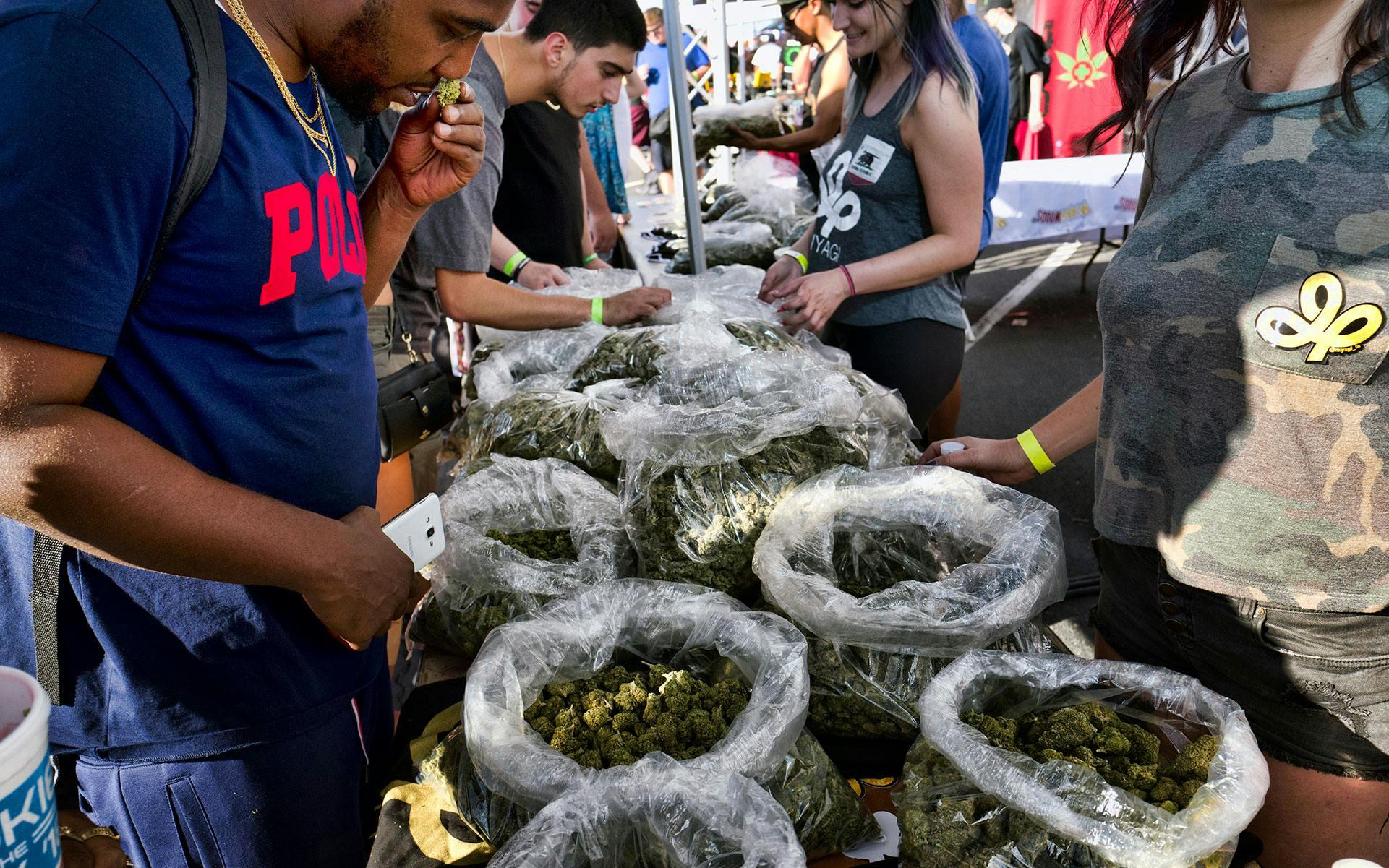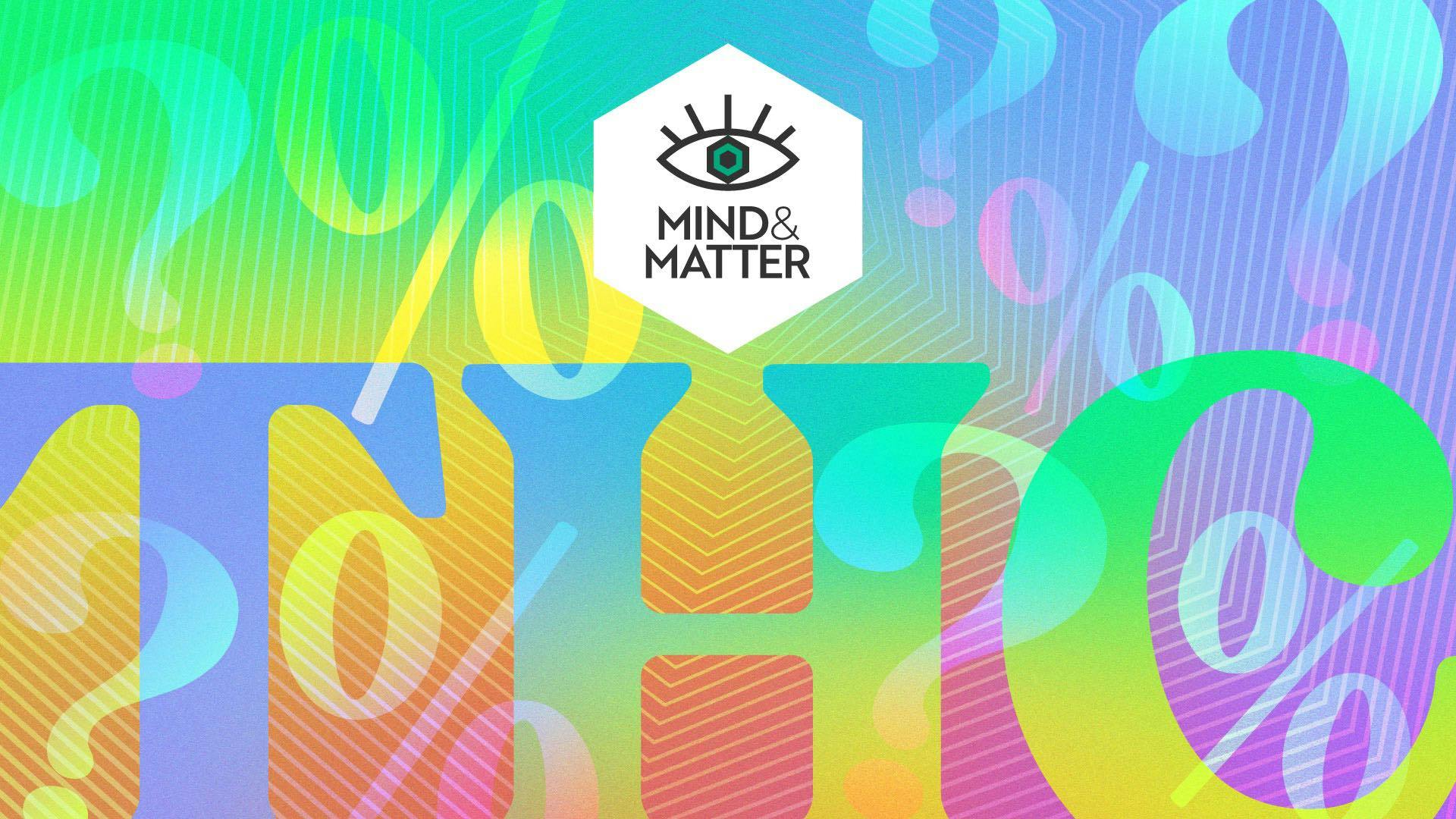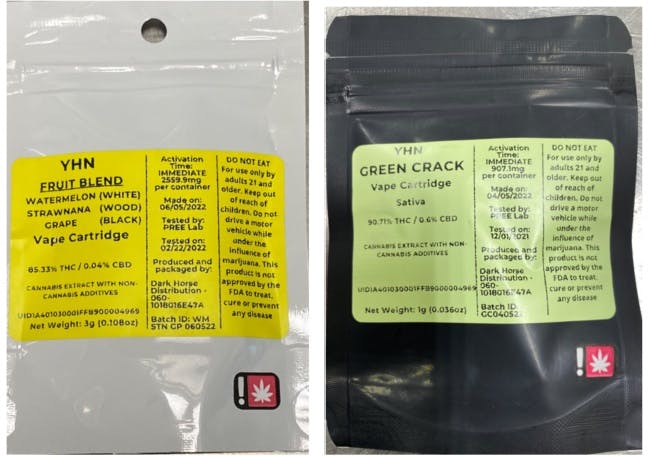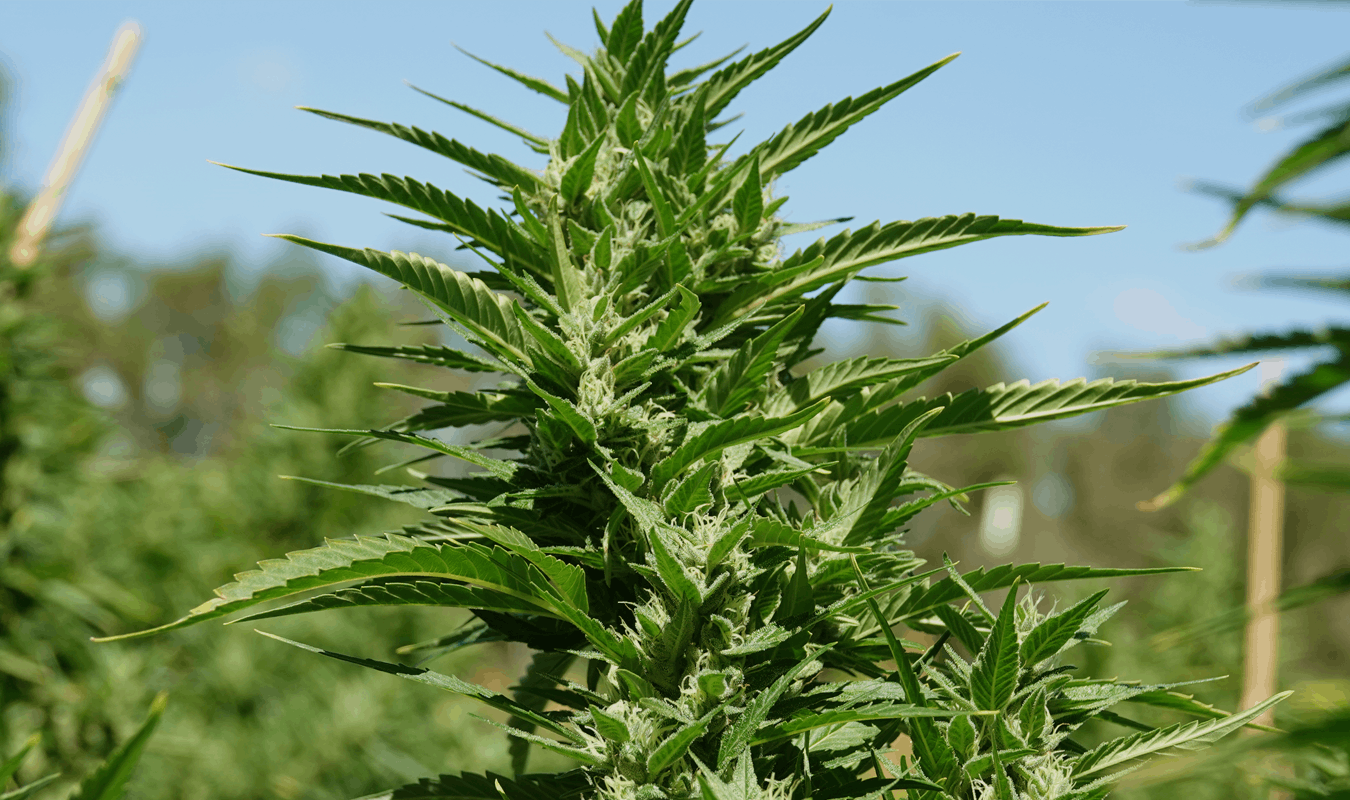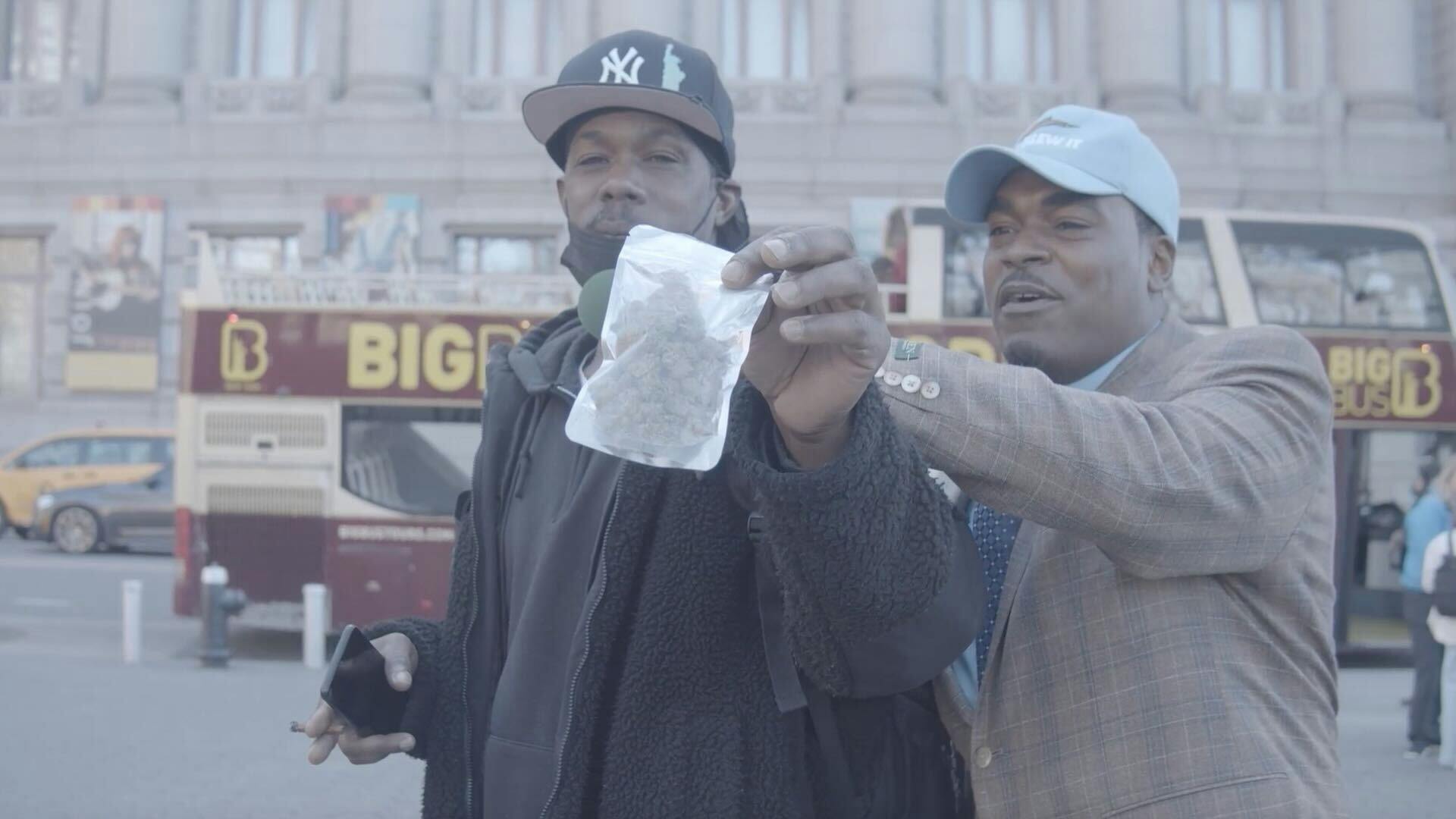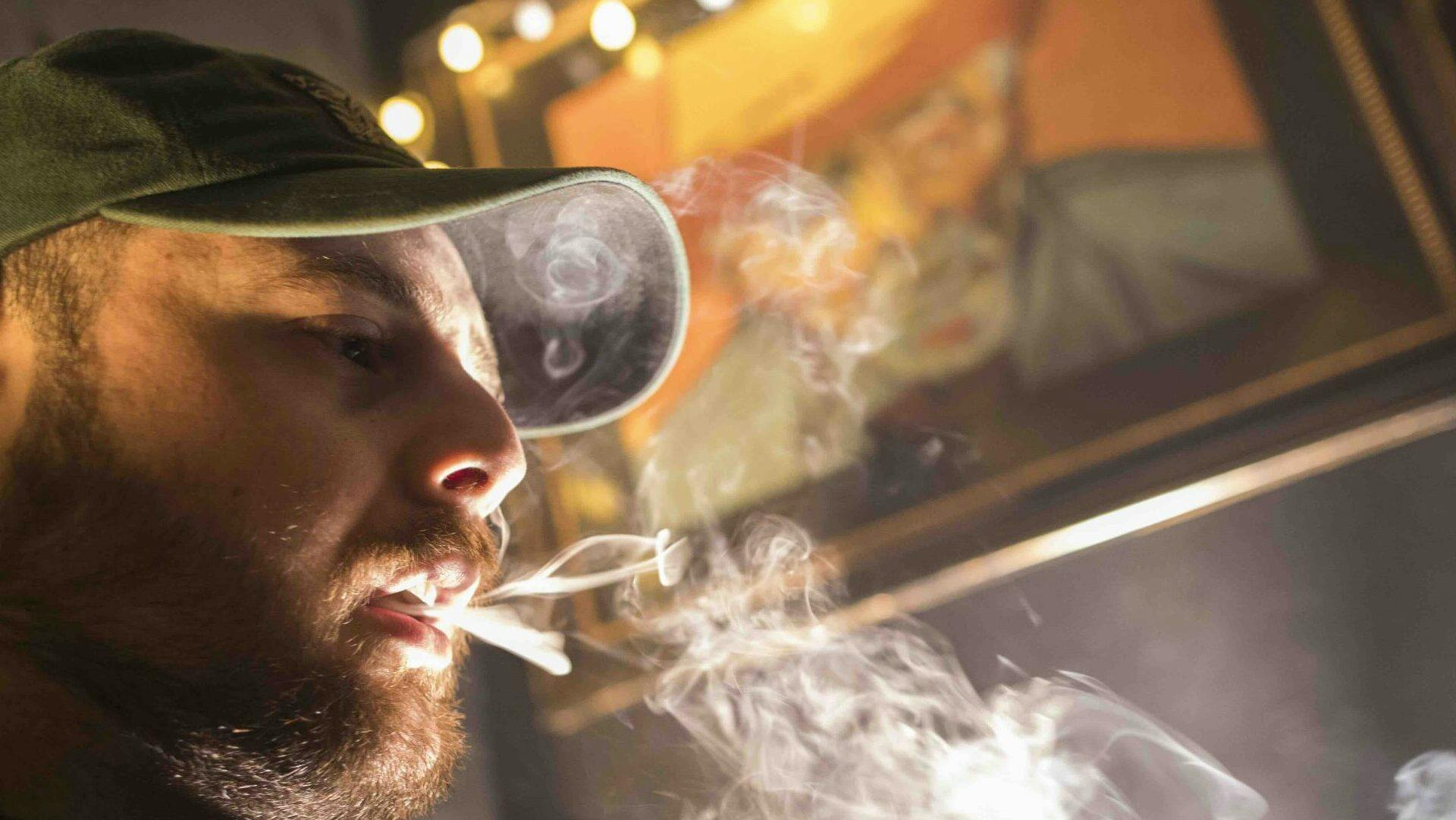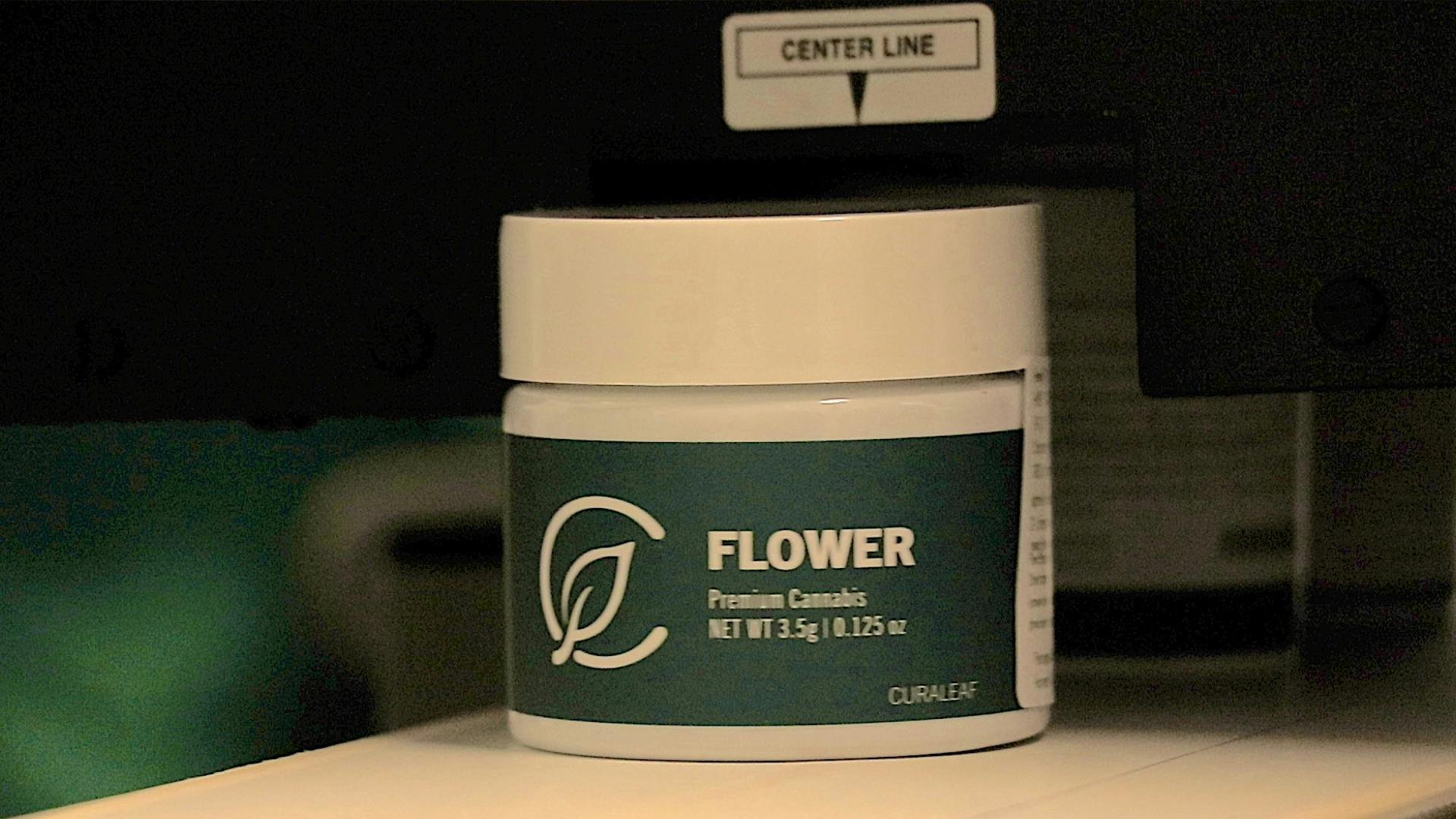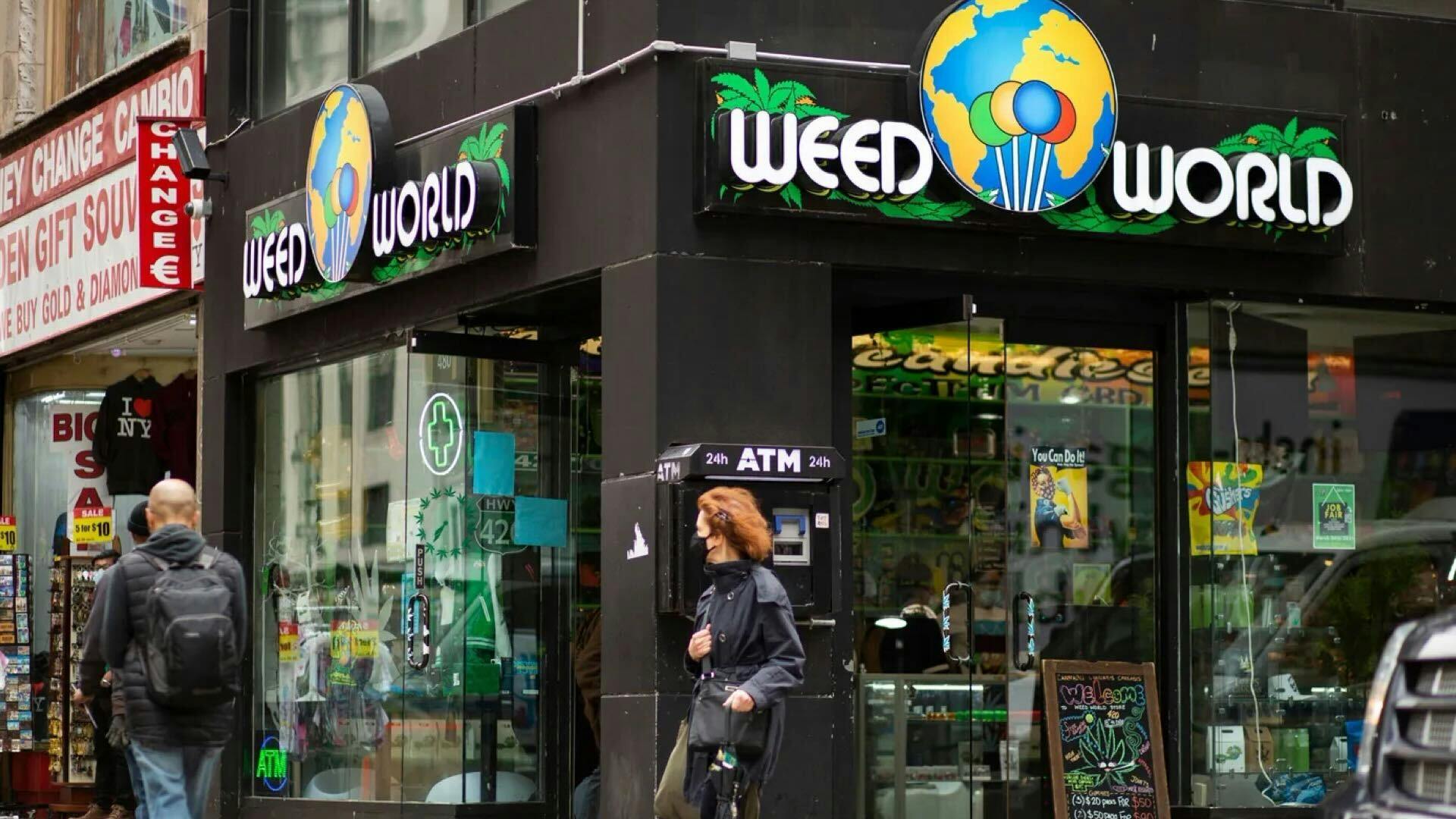New York plans to compensate survivors of the Drug War with the state’s first dispensary licenses — but not all parties are sold on the deal. Here’s what the state’s Chief Equity Officer told Leafly to help clear the air.
Tremaine Wright, the chair of the New York Cannabis Control Board, has promised the state will give residents impacted by cannabis prohibition the first shot at opening legal retail stores —but the path to a Conditional Adult-Use Retail Dispensary (CAURD, pronounced “card”) is not as simple as it sounds.
For example, applicants need to prove they’ve owned part of a profitable business within the last two years, and pay fees and operating expenses to stay eligible for their conditional licenses once they receive them.
Once licensed, it’s still going to be a challenge for these cannabis start-ups to compete. State officials still haven’t outlined exactly how New York’s social equity incubation program will keep these businesses competitive against major out-of-state corporations once the market expands.
On Aug. 25, New York began accepting the first wave of CAURD applications. The online portal to apply will remain open until Sept. 26, 2022. Next Friday, Sept. 30, is the deadline for prospective cannabis store owners to pay and postmark the $2,000 application fee.
As the state approaches the finish line for recreational weed legalization, which is slated for early 2023, New York’s Office of Cannabis Management (OCM) is set to host “Get Ready, Get Set” workshops around the state to assist future business owners with incubator programs and forgivable start-up loans.
As of last week, officials in the Office of Cannabis Management had not yet begun to review CAURD applications. Still, regulators promise that a forthcoming update to NY’s Marihuana Regulation and Tax Act (MRTA) regulations will provide a clearer view of the market’s final form.
With New York poised to become one of the most equitable cannabis markets in the US, how realistic is the state’s ambition to establish a level playing field? Can a few tweaks to the existing model really change the broader landscape of the industry? Here’s what the OCM’s Chief Equity Officer Damian Fagon and other officials had to say about CAURD critics, state politics, and a realistic timeline for the opening of legal weed sales.
How New York will cultivate a level playing field

OCM Chief Equity Officer Damian Fagon says that implementing the state’s ambitious social equity provisions is easier said than done.
Before joining New York’s cannabis office, Fagon led development initiatives with castor farmers in Jamaica, rice growers in Sierra Leone, and coffee exporters in Guatemala. He also helped launch commercial hemp operations in New York and the Caribbean, and hemp growing in South Carolina.
“We’re looking at building a fair, inclusive, equitable, level playing field for the cannabis sector in New York,” Fagon told Leafly during a recent phone interview. “We really want to build [a market] where the best will win, not the person with the biggest check wins.”
Executing that vision in a free market, however, is already proving to be a major challenge. When asked why he feels New York will succeed where other states failed, Fagon points to the two-tiered licensing structure that separates producers from retailers.
Under New York law, California-based STIIIZY, a well-established national brand, can produce cannabis at a new facility in Binghamton, New York, but the company will not be able to participate in the state’s retail market. On the front end, retailers will face similar limitations in starting cultivation or processing operations that could supply their own stores.
Fagon said that the separation of seed and sale will be crucial to the survival of small recreational weed businesses: Instead of chasing away successful operators from other states, New York plans to limit them to either the back end or front end of the industry.
Other states have allowed vertically integrated companies to kick-start their industries—buying their promise of compliance, but receiving varying degrees of rule-bending instead.
Fagon insisted his agency “recognizes that a lot of the brands that are sold in Manhattan dispensaries over the next five years are the same brands that are going to be on the shelves in London, in Berlin, Australia, and Mexico in the future: We want those brands that get that market exposure to become the best brands, to offer the best products, to be the most innovative. You don’t want it to be the people with the biggest checkbooks.”





The two-tiered model hasn’t stopped large companies like MedMen from soliciting New Yorkers with weed convictions to partner on a CAURD application. Laws in other states have allowed corporations to tokenize social equity applicants, effectively buying them out of their licenses or equity while claiming to empower them. It is not yet clear how New York will discourage predatory investing and market consolidation, but it’s an important thread to follow as the state’s multi-billion-dollar market matures.
How will New York support CAURD businesses?
The tax money raised from New York’s cannabis sales will go to grants and social programs that support impacted communities. That money will be overseen by the Governor’s Cannabis Advisory Board. The board includes public health officials, labor union leaders, and community advocates focused on reinvesting cannabis profits into New York neighborhoods.
The OCM, meanwhile, is set to oversee a fund of licensing fees from medical providers who are applying to enter the adult-use market. That capital will be used to support CAURD and other impacted businesses.
A separate $200 million private equity fund will also be included in the state budget as part of a partnership between the state and the private sectors. The fund, which is managed by former NBA star and current cannabis mogul Chris Webber, will aim to increase investments that help finance leasing and operating expenses for up to 150 CAURD license winners. The fund will give loans to licensees, but won’t hold them liable if they fail to repay.
Can Big Weed companies pay to play?

New York’s licensing structure is designed to encourage small-scale cultivators and processors to supply craft products to boutiques—curating a mom-and-pop market before corporate cannabis enters the field.
At first, there will be no vertical operations to crowd the industry, like the ones that currently dominate medical markets in New York, Florida, and New Jersey. Limited-license markets like those are ripe for price gouging and corruption. Still, the Empire State’s MRTA law states that MSOs will eventually be allowed to enter the retail game.
“The board shall also have the authority to assess a registered organization with a one-time special licensing fee for a registered organization adult-use cultivator processor, distributor retail dispensary license. Such fee shall be assessed at an amount to adequately fund social and economic equity and incubator assistance.”
New York’s Marihuana Regulation and Tax Act (MRTA)
Fagon told Leafly that MSO expansion into the adult-use retail sector won’t happen anytime soon. The state is currently negotiating with corporations to agree on a fair licensing fee. Regulators proposed each of the state’s 10 medical companies pay a one-time $20 million fee to enter the adult-use market, but the firms reportedly countered with an annual $3 million fee. Whatever the price, all capital will be used to support social equity businesses, according to the OCM.
“I think building up a market structure that really allows fair competition is what we’re putting in place to ensure our social equity license holders are successful,” Fagon told Leafly when asked what steps the state is taking to discourage a cannabis oligopoly from forming. The board has not revealed exactly how it will deploy capital to support CAURD businesses, but Fagon promised more info is coming soon.
For now, the MRTA vaguely states New York “shall not allow registered organizations to dispense adult-use cannabis from more than three of their medical cannabis dispensing locations. The timing and manner in which registered organizations may be granted such authority shall be determined by the board in regulation.”
What’s the current tally of New York’s cannabis licenses?

So far, New York has licensed 261 cultivators and 25 product manufacturers in the adult-use sector, but it could be another month or two before it grants the first set of retail licenses. Despite the tight timeline, multiple OCM officials have confirmed that adult-use stores will open before 2022 ends.
NEWS: New York Cannabis Control Board approves additional 10 adult-use processor licenses. In total, New York has 25 licenses to process cannabis from the #SeedtoWeed. #NYCCB
— NYS Office of Cannabis Management (@nys_cannabis) September 20, 2022
In a press release, the OCM stated on Tuesday: “These 25 Adult-Use Conditional Processor Licenses comprise a key part of the supply chain supporting the opening of New York’s adult-use cannabis market through the Seeding Opportunity Initiative. Through the Initiative, processors will take adult-use cannabis currently being grown by New York farmers and process it into consumer cannabis products. These products will then be sold at New York’s first retail dispensaries, through the Seeding Opportunity Initiative’s Conditional Adult-Use Retail Dispensary program.”
To be eligible to apply for cultivation licenses, farmers must be authorized to grow hemp under the Department of Agriculture and Markets Industrial Hemp Research Pilot Program. The OCM is still reviewing submissions that were received before June 30, 2022.
NY CannaInsider’s Brad Racino reported today that the CAURD portal was down for a few hours this afternoon. “I’m now hearing from multiple people (with screenshots) that the CAURD portal has been down for hours,” Racino tweeted. “I’ve reached out to OCM but no response yet. Not sure what if anything this does for the Monday deadline, but wondering how many others are hitting this problem today?”
The OCM said the portal fixed around 5 pm and that it would assess whether to extend the deadline by a day or so.
Here are the application requirements for NY’s CAURD program
New York law classifies eligible CAURD applicants as “justice-involved” individuals. There are two basic requirements for CAURD applicants:
- A cannabis-related conviction that occurred prior to the passage of the MRTA on March 31, 2021, or has a parent, guardian, child, spouse, or dependent with a pre-MRTA cannabis-related conviction in the State of New York.
- 10% ownership of a profitable New York-based business, or of a nonprofit with a history of serving “justice involved” individuals and creating vocational opportunities for them.
The entity must also be majority-owned by one or more “justice involved”individuals. This ensures a company like Verano, for instance, cannot give a random New Yorker 10% of a dispensary to be the face of their CAURD app.
Those who fit the bill, and get their applications in before September 26, will be first in line to reap the benefits of New York’s multi-billion-dollar market. But it’s still unclear how the OCM plans to ensure these applicants get a fair shot at long-term success.
“Some of the specific guardrails that we’re gonna put in place, I can’t name and describe yet, because they’re in the regulations that we’re about to release,” Fagon explained. “But the MRTA points to a lot of what that looks like.”
Fagon said that he and his office understand the pain points that advocates and legacy operators have raised in other markets. The only question is whether they have the tools to fix them.
“In other states, we’ve seen complete chaos in terms of vertical integration, separation of tiers, pay to play, management service agreements, branding deals, and buying shelf space,” Fagon told Leafly. “Financial contracts and terms that are done between large players really crowd out smaller operators from reaching customers and getting their products on store shelves,” he added.
New York looked to these state markets for guidance
Washington and Massachusetts are two of the legal markets the OCM said it views as somewhat successful. “In Washington state, they have their issues, but they still have a billion-dollar competitive marketplace with a lot of different, small, medium, and large operators. And that’s what we want,” Fagon said. He added, “We do not want to start off our legal industry completely consolidated into like 10 to 25 players. That’s absolutely no way for the best product to be created, to be innovated, to be discovered.”
Interestingly, Fagon looks to other states as models for licensing structures. “I feel like I’m gonna get heat for this, but there are elements of Oklahoma’s law that I like,” Fagon revealed, adding, “The absolute low cost, low barriers to entry–a couple hundred dollars for license–anyone who wants one can get one. That is where we should want to be eventually when the market settles down and people aren’t racing to consolidate licenses to increase their valuation and potentially be sold off to a bigger company.”
“When all this dust is settled, it should be as easy as in Oklahoma to get a license. And anyone who wants to start a brand or a company or grow, and has a good idea, should be able to do that. So I think what Oklahoma did has a lot of negative consequences, but the idea behind it is a free marketplace. It’s letting Americans do what they want to do with their entrepreneurship goals, and to innovate. And so there are elements of it that I appreciate.”
Damian Fagon, Chief of Equity, New York Office of Cannabis Management
Here’s how MSOs are reacting to New York’s regulations

This summer, Curaleaf was fined by New York for choosing to label its products outside of state regulations. The company displayed the “dry weight” potency of products in July, even though New York requires retailers to list “wet weight” THC levels on labels. The difference between wet and dry tests can appear dramatic, as the same sample can test at 20% THC when wet, but up to 37% when dry.
The company apologized, but also said it expects the law to change to suit the company’s preference. Corporations like Curaleaf have reportedly advised lawmakers in other states. But the OCM insists that it will not stand for corporate interference in their process.
“Cannabis businesses have no place in writing regulations that are going to dictate how they operate in the New York state market,” Fagon said. “I’ve literally been in all meetings over the last few months where we’re writing these regulations. So those statements, public or otherwise, don’t really factor into the regulatory system that we’re building. We’re building a regulatory framework for a sustainable, inclusive and equitable industry. Not for a few businesses to make it more convenient and operationally efficient for them. It’s about the people. It’s about the state. It’s about the MRTA. And it’s about those communities most harmed by the War on Drugs. Those are the people that we’re listening to as we write regulations.”
Damian Fagon
Fagon said that large operators don’t bring legacy knowledge or innovative products. But their capital and risk tolerance still appear to be a key piece of a legal market capable of supplying New York’s world-class weed habit.
Insiders in New Jersey and New York have told Leafly that some MSO executives have actively lobbied against social equity laws in New York and other states. Some claim these businesses are doomed to fail no matter what measures are taken. Others feel it is unfair to undo inequalities of the past with new forms of discrimination. But reps like Columbia Care exec Ngiste Abebe have said they are excited to support social equity. They just “would love to see the economic analysis that justifies the $20 million” license fee the state is requesting, according to The New York Times.
“It needs to be grounded in the economic realities of the market,” Abebe said of the fee. The Bluntness reported in August that NY cannabis board Executive Director Chris Alexander said this about the hotly-contested fee: “The only real guidance [for the licensing fee] we have is the requirement that it’s a sufficient amount to fund the equity program, or at least the upfront needs.”
Here’s how to apply for a cannabis license in New York
Here’s why the state is cracking down on “illicit market”
Fagon admits that cannabis isn’t nearly as dangerous as alcohol or firearms. But he feels it does warrant heavy regulations, including the controversial proposed ban on cartoonish-block letters that some fear could attract children to weed products.
Fagon said two aspects of New York’s unregulated industry keep him up at night: The public health concerns that come with untested products, and the the long-term health of the market. The second problem still confounds leading markets like California and Colorado.
New York City reportedly smokes more than any city in the world. And Fagon fears that much of that illicit smoke includes reject batches from California and Oklahoma. “I know that we are getting their worst products,” Fagon said. “We’re getting the stuff that they couldn’t sell legally in those states, we’re getting the stuff with pesticide, with heavy metals that was grown on the cheap with synthetic fertilizer. So there’s consequences to that. There’s serious public health and safety consequences.”
Fagon said farmers can claim their weed “was grown with love, but there’s no verification process for any of the stuff that we’re consuming and ingesting, (and) it is going to our brains.”
His concerns about the health of the market are also evidence-based. Fagon believes that a healthy market cannot grow if unlicensed operators are allowed to undercut legal operators. But where does that leave New York’s thriving gray market?
“I’ve walked into a bunch of these gray market dispensaries, just to get a sense of what’s going on here? Like, who are these people? What are you selling? And in case after case store, after store, I’ve asked people what they’re selling, where they got it from, like just outta curiosity as a potential customer. And they have no clue what they’re selling or where it’s from. And that stresses me out because anyone who’s been buying weed in the city’s black market for most of their life, you take a leap of faith with your dealers and hope that there’s no pesticide, there’s no heavy metals, this is a clean product.”
Damian Fagon
Here’s what NY regulators told Leafly to clear the air about its gray market

Some are confused by messages from the OCM, State Senate, and NYC Mayor’s office regarding the proper way to navigate the gray market. “Light up, enjoy yourself, but most importantly, spend some money,” said Mayor Eric Adams in the spring.
His encouraging comments came the same week that the state’s Senate attempted to pass harsh laws cracking down on illicit sellers. The Senate bill is delayed until next year. But officials across the state have already started to target unlicensed sellers.
“I’m buying illegally right now,” Fagon admitted without hesitation. “So I can’t say what the mayor said was wrong. He’s just acknowledging a cold, hard reality of the city. People are gonna smoke, whether you tell them to do it or not. We’re in the situation now with the MRTA signed that there’s no criminal repercussions for doing so. It’s legal to smoke weed. So why not tell ’em to light up?”
Fagon assured Leafly that no law enforcement officials will be targeting small-time dealers who are operating within the MRTA’s rules for possession and consumption. But brick- and-mortar stores and trucks that are selling in the open could face consequences soon. NYC has already targeted Weed World Candies and other retailers for toeing the gray market’s murky boundaries. But the OCM insists it does not plan to take action against the same legacy operators that the CAURD program aims to empower,
Should weed be regulated like alcohol?

Fagon reminds critics that legalization comes with patience, and a lot of give and take. He says that lawmakers and regulators don’t always have the leverage to enact an ideal industry from day one. But progress is better than prohibition.
“It’s still illegal in half the country,” Fagon said when addressing laws that still feed into false stigmas about the plant. Those include a ban on bubble-letters or cartoon-type fonts, neon coloring, and references to sweets. Lawmakers argue that these elements could attract children. But others say it’s just an attempt to further commodify the plant by stripping legacy communities of influence and ownership.
“Something like 35-40% of New Yorkers still don’t even support a legal industry,” Fagon told Leafly when asked why the OCM is allowing cannabis to be regulated similarly to alcohol.
“There is no comparison with liquor and cannabis,” Fagon said. “I think weed is a thousand times better than liquor, which is essentially poison… But, we’re at the beginning stages of what is going to be centuries of a legal industry. So there are stages we have to move through. We have to take people with us on this journey, holding their hand through the evolution.”
Fagon feels the trade-off “may start with holding onto certain elements of the stigma: Where it needs to be; Where this plant needs to be tracked from point A to point B; You need security cameras; You need to track and do background checks on who touches it. Like, this is all absolutely absurd. A lot of people can look at it for what it is and see the absurdity of it.” But he believes in time, everyone see the benefits.
“People consume cannabis on a daily basis for work – For their creative jobs, for their data entry jobs. I know a guy who writes AI algorithms for Microsoft, and he smokes an ounce every few days while he works, because it helps him work. You cannot say the same about liquor in any capacity. There’s no medical or therapeutic aid, or even increased productivity. So yeah, there’s absolutely no comparison.”
Damian Fagon
Damian Fagon’s vision for NY’s new weed market

“If you go on any street corner in New York City, there are a dozen different stores that sell beer, wine, or liquor… We will get to a place where cannabis is gonna be as prolific as alcohol. It’s just not anytime soon. We have to take baby steps to get to that place where cannabis is more readily available, it’s more normalized, and there’s less stigma.”
Damian Fagon, Chief Equity Officer at New York’s Office of Cannabis Management
Damian Fagon’s journey to his current office was “pretty unconventional,” in his own words. “Unlike a lot of the folks at OCM, I don’t have any state government connections. I never worked in Albany,” he said.
Fagon got the opportunity after appearing on a radio show in Harlem. He and his friend Curtis Archer discussed social equity on the show back in March when Fagon was a cannabis workforce developer at a nonprofit in Brooklyn. “Getting people ready for jobs in the space,” is how he describes his old gig. “I was just talking about my ideas about what the state was doing with CAURD and the majority leader, Crystal D. People-Stokes, overheard the radio interview and invited me to Albany to talk about my ideas for the industry.” Fagon added that “it took a lot of back and forth before people were comfortable with an outsider going into that role.”
“The first time I smoked weed was, um, eighth grade. I was like 13 years old. I think it was a mistake smoking that young back then. But it was definitely because I was told I shouldn’t do it. I’m 35. I’m part of the ‘D.A.R.E. to be of different’ generation. You know, doing all those events in elementary school and middle school wearing the ‘say no to drugs’ sweaters.”
Damian Fagon
The reefer madness messaging of prohibition sparked a “rebellious curiosity,” in Fagon. “That’s probably the first reason I tried it back then,” he admitted. “Then I fell in love with it in college.”
His past with the plant has arisen a duty in Fagon to protect the legacy operators who made legalization possible. “The only reason I ever learned about weed and fell in love with weed is because someone sold it to me and someone told me about it. And I can recall moments throughout my life based on who I was buying weed from at the time, depending on where I was,” Fagon said.
“In high school I was buying weed from El Salvadorians in the park. Then in college, I was buying weed from townies in my college town. And in every case, I would buy weed from people who were really passionate about the plant. They were not rich. But they did this out of love. They smoked weed, they grew weed. It was local immigrants, local people, natives of that community who loved the plant and made a living off of selling it. And so I’m just blessed to be in a position now to bring it more to the mainstream in New York.”
Damian Fagon
Reasonable doubts and reasons for optimism
Lawmakers, regulators, business owners, and at least 60% of New Yorkers want the legal weed market to thrive. But each group has its own conditions and concerns. The lingering question is whether a CAURD applicant from the Bronx has the same tools for success as those who already have a seat at the table.
More than 450 people have reached out to the Bronx Defenders legal team for help with the CAURD app. Just 50 of those who inquired are eligible. And some of the residents who do qualify say they’re overwhelmed by the daunting application and short deadline to apply.
Eli Northrup, a Bronx Defenders attorney, told THE CITY NYC that New York “has done a good job on their website explaining and answering FAQs, but aside from that, there’s not a lot of other organizations set up to help people right now.” He added, “I don’t know of any other ones besides us that are helping people through this process.”
New York City’s Department of Small Business Services recently launched a support hub called Cannabis NYC to assist applicants. And OCM reps promise that more programs are on the way.
Can the harm of the Drug War ever be repaired?

The Empire State, and its world-leading city of cannabis consumers, are approaching social equity with more ambition and transparency than any we’ve seen thus far. In Florida, only one license has been set aside for Black farmers who won a civil suit against the Department of Agriculture for decades of discrimination. And while New Jersey is also giving impacted residents an early shot at the adult-use market, ahead of other local businesses, they still haven’t caught up to the MSOs that opened in April.
But really, no fund or priority access can repay the years of lost life and prosperity that prohibition took from countless New Yorkers. Which is why reparations for institutional wrongdoing can be so hard for recipients to find peace with. Once accepted, the price is final. And those who weren’t ready or eligible for restitution aren’t made whole by seeing others receive it.
Not to mention, those who win a license aren’t guaranteed a fair shot at long-term success.
For the CAURD licensees who pass the gauntlet of application paperwork, it’s still not clear how the head start will give any significant advantage over the booming gray market, or Big Weed companies once more licenses open up.
Given the volatility seen in more mature state markets, New York can’t guarantee prosperity to any of its legal weed participants, large or small. And many legacy operators and activists who were burned by corruption in other markets still have valid doubts that the state will actually fight an oligopoly from forming once the tax dollars start rolling. Other skeptics simply want regulators to point to any other state with social equity laws that succeeded before they buy into the dream that’s being sold.
With other states and nations watching how things play out in Gotham, the stakes for social equity are higher than ever.
If an equitable weed industry can’t make it in New York, can it make it anywhere?
